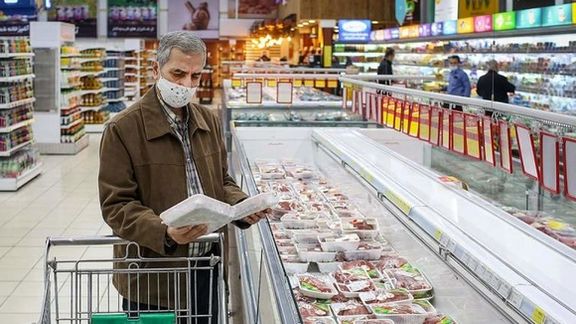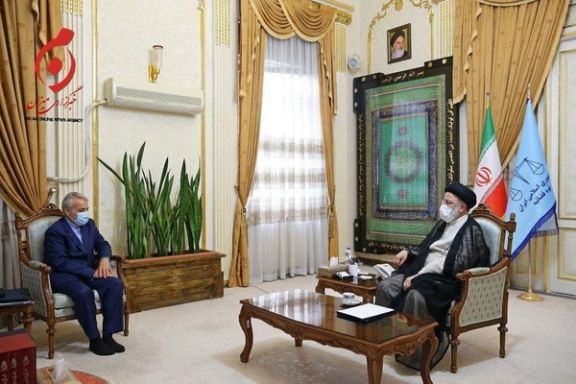Iranian Politicians Fight Over Economic Data Amid Inflation And Poverty

Despite pervasive poverty in society, the Iranian government boasts about its performance but based on apparently fabricated data, a former official says.

Despite pervasive poverty in society, the Iranian government boasts about its performance but based on apparently fabricated data, a former official says.
To justify its inept handling of the economic situation, manifested in devaluation of the national currency and runaway inflation, the administration of President Ebrahim Raisi is falsifying statistics pertaining to the government of Hassan Rouhani to pretend there has been growth under his stewardship.
The sheer volume of inaccurate information has prompted Mohammad Bagher Nobakht, a vice president under Rouhani and the former head of the Planning and Budget Organization, to write an open letter to the incumbent, providing what he described as the correct data.
He pointed out that the current administration claims the average annual inflation rate was about 60 percent in July 2021 to justify the current figure of about 47 percent, but the real figure reported by the Statistical Center of Iran at the time was 45 percent.
Iran’s point-to-point inflation rate was about 64 percent in March, a figure only recorded twice since World War II. Then the government changed the “base year” from the Persian year 1395 to 1400, which ended on March 20, 2022. The new base year -- used for comparison in the measure of a business activity or economic or financial index – resulted in new figures at about 45 to 50 percent.

Nobakht added that the economic growth rate of the country was also about three to four percent in the last year of Rouhani’s term and not the 0.4 percent that the current government claims. He also provided official reports by the Central Bank of Iran and the Statistical Center to back up the figures he cited. It should be noted that the numbers by the two government organizations are different from each other and also different from that of the World Bank. Moreover, the current administration puts the average economic growth rate of its first two years at 4.8 percent, but the World Bank says the growth rate in 2022 was 2.7 percent.
“It is not possible to create an acceptable performance record for governments through comparing selective and unscientific economic indicators,” Nobakht noted, highlighting that the people will judge the success of the current government based on its announced commitments, such as the annual creation of one million housing units, one million jobs, reducing the inflation rate to less than 10 percent, and efforts to lift US sanctions.
Reacting to the letter, the official news agency of the government, IRNA, published two articles on Monday and Tuesday claiming that when the current administration took office, it inherited a huge burden of unsettled debts from previous administrations. However, according to a report in July, the current administration has been aggressively borrowing from quasi-public banks to fill its budgetary gap and keep its unprofitable companies afloat.
IRNA claimed that the remarks by Nobakht are in line with former officials’ attempts to justify their performance so that they can have a chance in the upcoming parliamentary elections.
Against the backdrop of political rivalries that are intensifying ahead of the elections, Iranian people are the ones who bear the brunt of the country’s inflation and currency devaluation no matter which officials hold office. The first years of Rouhani’s term coincided with the 2015 nuclear deal with world powers that led to removal of most sanctions and boosted the economy. But after the US withdrawal from the JCPOA and reimposition of sanctions, the country’s economy was on a nosedive.
The Islamic Republic has been struggling with high inflation since at least 2019, but the raging inflation in the past Iranian year which ended on March 20, was seriously different from previous years. The inflation rate factors in numerous commodities and services but the one most important for Iranians is increasing food prices, with some categories doubling or tripling in the past 12 months. Official figures show there was a sharp increase in food prices and most items witnessed a more-than 50 price inflation. The devaluation of Iran’s rial from 260,000 per US dollar to about 500,000 this year signals even higher economic woes for the people.
According to a report in Aftab News website, affiliated with reformists, in the past two years, the overall inflation for essential household needs was over 250% while the minimum wage has only increased 27%, quipping that the deputy labor minister calls this “an achievement” of the Raisi administration.